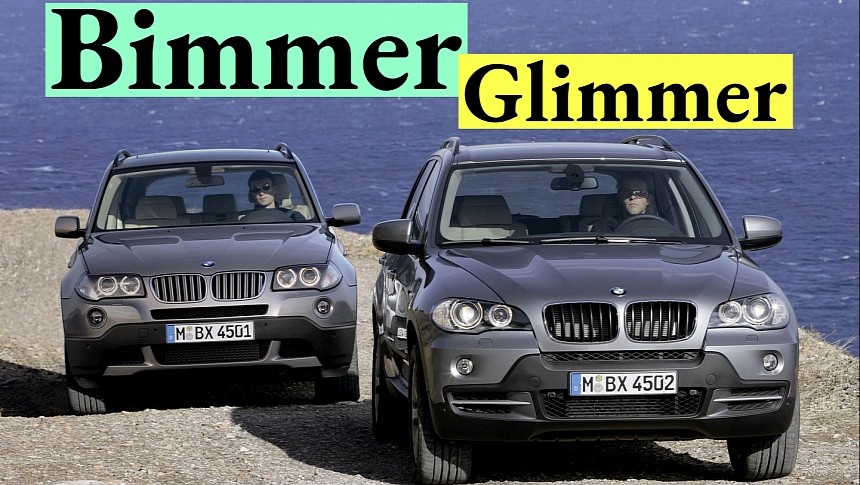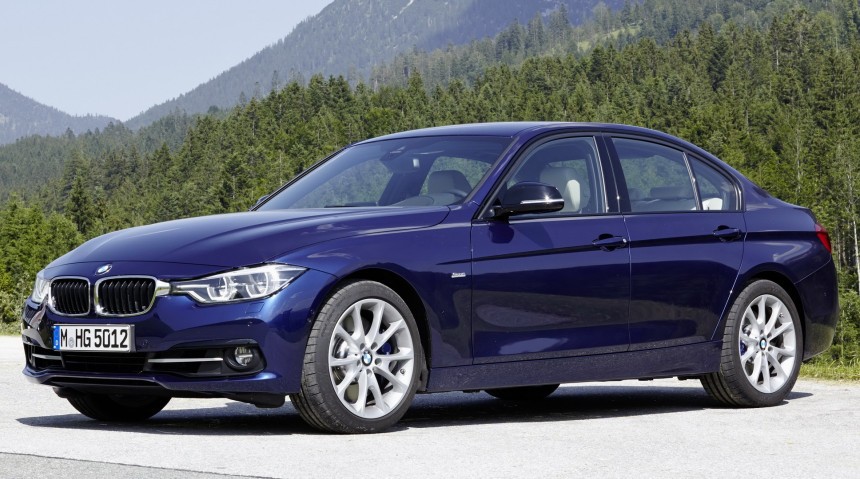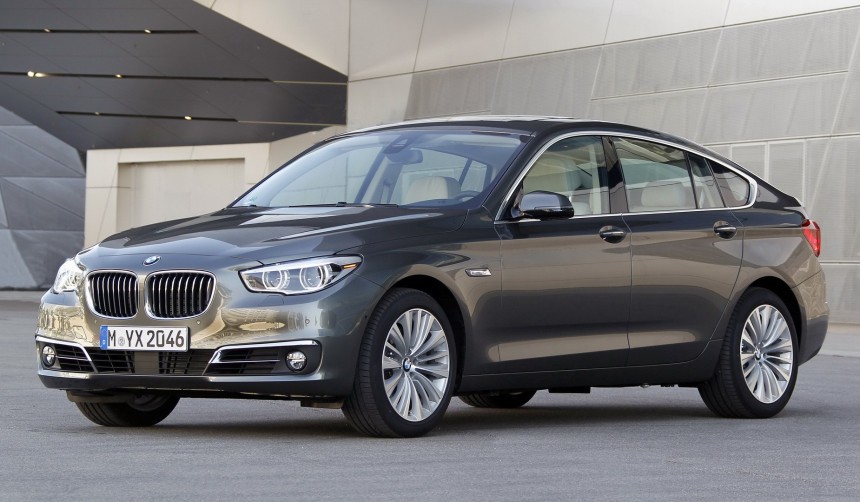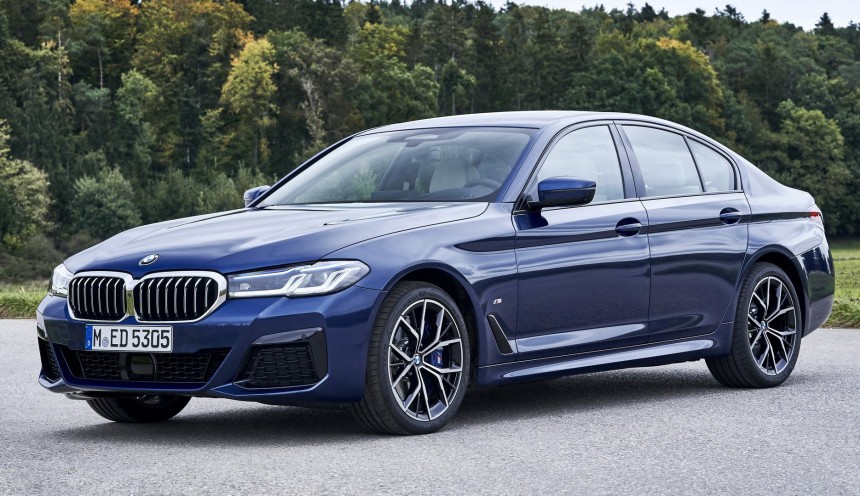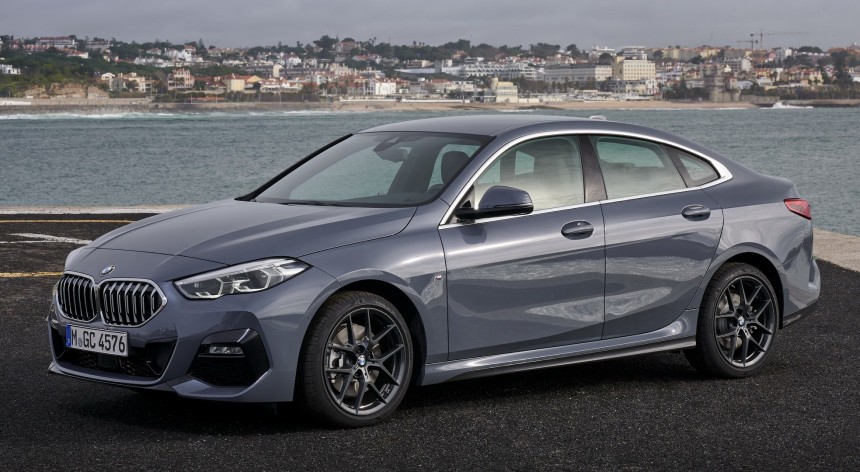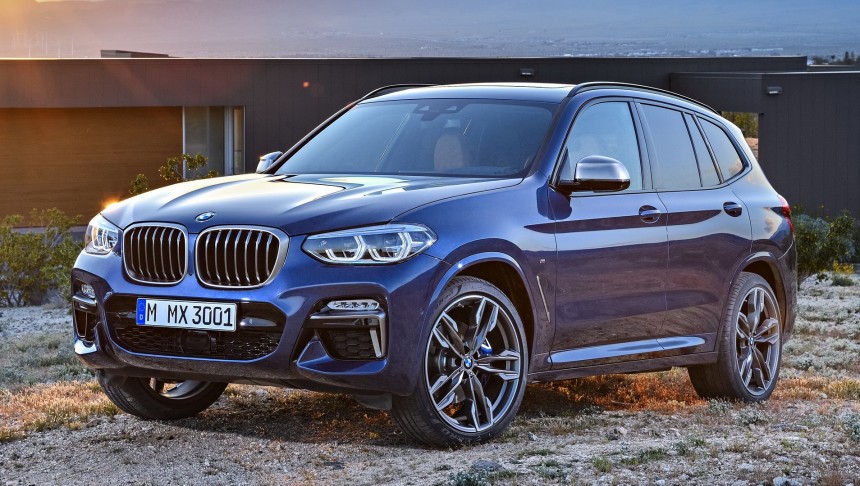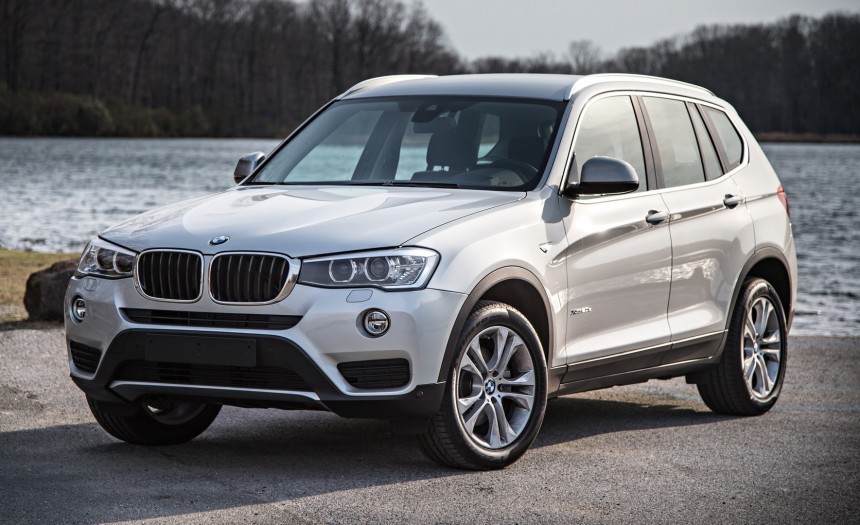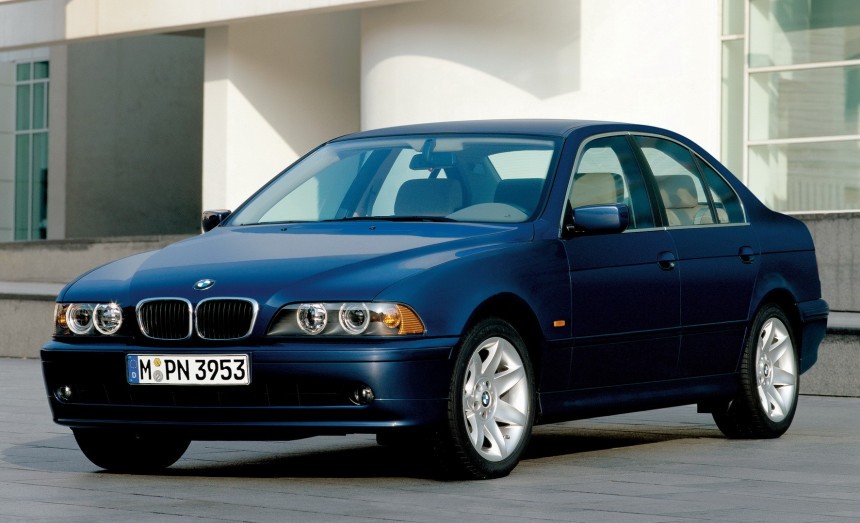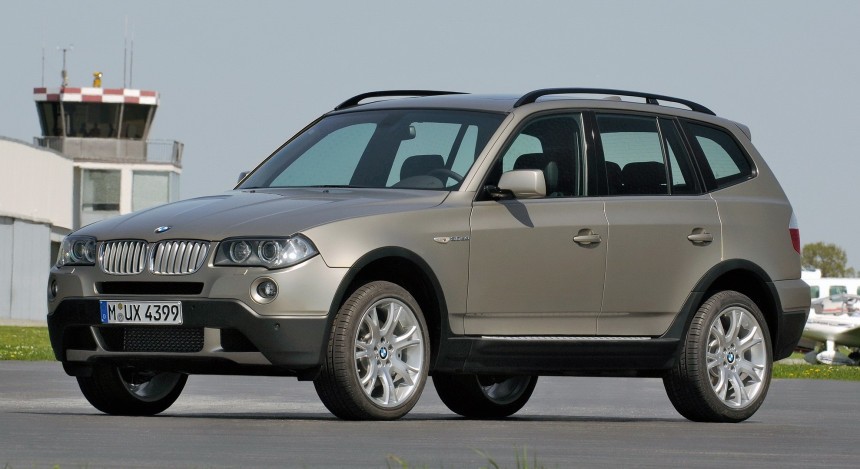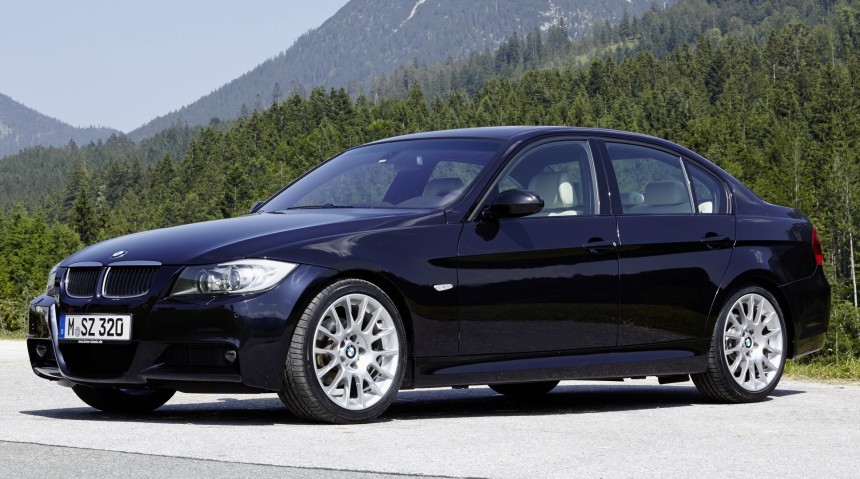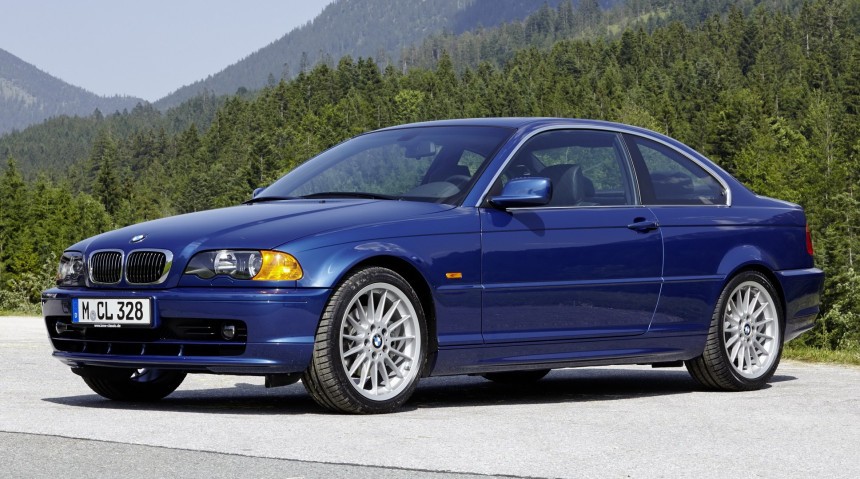If you think that finding the 10 most reliable BMW models ever built is as easy as looking at some statistics, you might want to think again, because just like with using analytics to scout an athlete, numbers will never tell you the whole story.
I’ll be honest, I’ve looked over about a dozen or so other websites, read studies, saw all the numbers and none of the rankings I’ve seen out there make total sense. Some don’t make any sense at all, while others are justifiable, to say the least.
The problem with reliability is this: it’s all relative. It’s like comparing the 2017 Warriors with the 1996 Bulls. Who wins is entirely based on the era in which the game is being played. The same goes for cars and reliability. Whether or not it’s something that affects you specifically depends entirely on what your expectations are from your daily ride.
Take age, for instance. On the one hand, an older BMW, like say an E30 or an E34, has a lot fewer complex components than a modern-day equivalent, which means there’s a lot less that can go wrong, right? Well, yes and no. You see, even if certain bits fail less often on those older models than they do on newer ones, the fact that the car itself might be several decades old means that wear becomes your no.1 concern.
With newer models, your mechanic will tell you which components are likely to fail and when, which can bring peace of mind even with Bimmers that aren’t known to be particularly reliable – like the E60 5 Series or the F10 5 Series, for example. However, when dealing with wear, literally anything can go wrong, at any time.
So, which of the two scenarios offers you more peace of mind? It depends not just on your budget, but also your personality.
The best you can do is look at the numbers and apply logic – which means opting for a car with a history of decent reliability (decent is enough, doesn’t have to be great), fitted with an ultra-dependable power unit. Another important aspect to consider is prior ownership. If you’re in the market for a used BMW and overall reliability is what matters most, then maybe stay away from models that were, on average, likely beaten to hell because of their sporty nature.
Anyway, enough chatter. Let’s kick things off with no. 10, which I’ll admit is a bit of a cop-out.
The sixth generation 3er is a really good car, by any metric. It’s not particularly well-known for its reliability, but it’s not dreadful on that front either. Landing the correct spec will go a long way towards reducing the number of problems you might encounter along the way.
Unless money is no issue, stay away from flagship specs like the M3. If high performance is a must, aim for a 340i rather than a 335i, as the former comes with the newer and on average, more reliable B58 turbocharged straight six, rather than the latter’s N55 unit, which is also a turbo straight six.
Same goes for the 328i vs. The 330i. The latter’s B48 turbocharged inline-four is known to be more dependable, whereas on those older N20 units, you can expect the timing chain to fail at some point.
As for our readers from Europe, buying a diesel model like the 320d or 330d, makes for an easy choice. The culture over there is more geared towards diesels, however, the fact remains that a turbodiesel power unit is nowhere near as dependable as its gasoline counterpart.
Ultimately, the F30 cannot be considered a bad choice when it comes to buying used – just like you couldn’t really fault it as new. This was the first 3 Series model to embrace comfort almost as much as sportiness.
Full disclosure, a colleague kind of talked me into this one. But as Mr. Spock would say, his argument is sound.
Despite lacking in the popularity department, with many BMW enthusiasts disliking it to its core (mostly because of its appearance), the truth of the matter is this: the F07 BMW 5 Series GT is a ‘cheat code’ type of car.
It’s brilliant from a practical standpoint, and supremely comfortable. As such, most of the people who bought it, did so for practical reasons, so it’s unlikely that they were abused the same way a “regular” Bimmer would be by most driving enthusiasts. So, yes, that’s one of the arguments we can make in its favor.
Also, very few of these ended up getting sold in the United States, which means that if you get your hands on one, you will turn some heads – for better or worse.
Speaking of which, personally I don’t find the 5 GT as unsightly as some, if not most people do. Yes, it was unconventional by late 2000s standards, but nowadays? Just look at how many “weird” BMWs there are out there, with the iX chief among them.
As for which specification you should aim for, there are only two choices in the 535i and 550i. Better to go with the six-cylinder.
The G30 5er has already been around for 7 odd years, which means it’s definitely not too early to gauge its dependability, and according to most metrics, this is likely the ideal slightly used premium executive sedan for the budget-conscious buyer.
It boasts a reliability score of 88/100 on J.D. Power, which technically makes it one of the most reliable BMWs ever. The reality is probably a bit different, but still, this is one car that won’t let you down.
All available powertrains for the G30 are turbocharged – either single or twin turbo, which isn’t exactly ideal, but nowadays it’s not like there’s any choice in the matter. Still, opting for a 530i or 540i is probably the way to go, as both the B48 and B58 engines can be praised for their fuel efficiency, smoothness and performance.
In terms of longevity, better to go for the 540i’s six-cylinder (B58) unit and keep away from used models with very high mileage. Otherwise, if you could go back in time and buy one brand new, the likelihood of something going wrong would be quite small.
Another interesting variant was the 545e plug-in hybrid, powered by the same 3.0-liter B58 straight-six turbo as the 540i, but with electrical assistance. These were very economical and quite fast, but don’t make as much sense as a second-hand purchase as some of the more conventional specs.
Surprised? You really shouldn’t be. This is BMW’s entry-level model for the United States, and you can get one today’s from just $38,400, which would land you the 228i specification. It is powered by a 2.0-liter turbocharged four-cylinder B48 unit, good for 228 horsepower and 258 lb-ft of torque, manipulated by the carmaker’s exquisite 8-speed Steptronic gearbox.
Right off the bat, you’ll want the 228i and not the 228i xDrive, just so there’s a lesser chance of anything costly going wrong.
As for the M235i spec, unfortunately it’s only available with xDrive all-wheel drive, but otherwise you’d be dealing with the same B48 power unit, so no additional worries there.
If buying used, make sure the transmission fluid has been changed, and otherwise, enjoy what should be a relatively stress-free experience. Oh, and regarding the fact that both the 1 Series hatchback and 2 Series Gran Coupe now feature front-wheel-drive architectures instead of RWD like in years past, look, there are upsides and downsides.
A pragmatist with reliability on his or her mind will surely have no issues with the driving characteristics of the 2 GC. Besides, buying an entry-level BMW also means not having to worry as much about ultra expensive components failing either in time or abruptly – as you would in say, a 7 Series or an XM.
According to CarEdge, you’re only looking at a 20.2% major repair probability over the span of 5 years with a 2 Series Gran Coupe, and by major repair they mean anything that exceeds $500, including parts and labor.
There’s going to be a repeating theme here regarding the BMW X3, and for good reason. Historically, this has been one of the Bavarian carmaker’s most successful products in terms of reliability and overall value-for-money, and the same goes for this latest, third-generation variant.
The G01 X3 was unveiled in 2017, so just like with the G30 5 Series, we have enough data on it to draw all the conclusions we might need.
Because it shares the same architecture, engines, gearbox and tech with its sedan siblings, there’s very little to fault the X3 for, if anything. Compared to its rivals, it is remarkably dependable, with a low failure rating – it's arguably the best SUV in its segment, all things considered.
You can get a new one from $46,900, which means choosing between the sDrive30i and xDrive30i, both powered by the same 2.0-liter turbocharged four-pot as the 228i Gran Coupe. Of course, the more expensive M40i variant is just as good a choice, if not better, seeing as how it’s got the B58 turbo under the hood, like the 540i.
In conclusion, this is the type of SUV that will almost never let you down, unless you genuinely need more room – which is what the X5 and X7 are for, but maintenance costs will go up considerably as you put higher numbers behind the X.
The second-generation BMW X3, particularly post-LCI variants (2014 and later), was (and still is) among the least problematic compact SUVs money can buy.
The F25 shifted perception in its segment, when it was introduced back in 2010. It stood almost as big as the original X5, which meant that most of its owners were obviously pleased with how comfortable it was over longer journeys. Not only that, but this X3 was still available with naturally aspirated inline six-cylinder engines, specifically the N52.
Unfortunately, you might struggle to find used examples equipped with this power unit, as it was only available in the U.S. for a single model year (2011-2012) on the xDrive28i specification. Afterwards, it was replaced by the N20 straight-four turbo, which everyone agrees wasn’t as reliable or as refined.
Other changes that came about with the facelift included the restyled headlights, a slightly redesigned kidney grille, new bumpers, integrated turn signal lights for the exterior mirrors, some new upholstery designs, new trim, new colors and one or two other things.
Today, you can get a really nice second gen F25 BMW X3 with "decent" mileage at around $20,000. As for a really low-mileage one, it will likely cost you an extra $5,000 or so.
We’ve entered the realm of 90s and early 2000s Bimmers, and even though I said that owning an older model could mean that certain non-bank-breaking things might go wrong unexpectedly, the fact remains that cars from that generation were simpler and some might argue, of a higher build quality.
Quality control is supremely important, and I’m not accusing BMW of taking any shortcuts, but carmakers as of late have been forced to make certain concessions. This is something we all know.
Also, cars back then were meant to last longer, period. They weren’t built with as much “consumerism” in mind. And of course, it’s not just BMWs from that era that were built like tanks, but also Audis, Mercs, VWs and so on.
Some would say the E39 is perhaps the most reliable BMW, period, deserving of the no.1 spot on this list, but I think we can hit more of a sweet spot with our Top 3 selection.
BMW unveiled the E39 at the 1995 Frankfurt Motor Show as one of the brand’s first models to feature curtain airbags. Touring (wagon) models also came with self-levelling air suspension, but we wouldn’t recommend you buying one of those today. If that self-levelling system gives in, the bill won’t be cheap.
As for the most reliable specification, anything with a naturally aspirated straight-six (either M52 or M54) is a safe bet.
I had to cave on this one. I can’t speak much about the first generation E83 BMW X3 from personal experience, having only driven one for a few hundred miles once, but everyone and their grandmother seem to think that these things were bulletproof.
After doing a bit of research, I can’t help but agree. The E83 was remarkably problem-free, and even if something did happen (like say with the transfer case actuator gear), the fix won’t be either expensive or complicated. So, not only could you buy one of these SUVs new and drive them for hundreds of thousands of miles carefree, but even a used one today should still prove extremely dependable.
Of course, you had the wonderful combo of naturally aspirated inline-six gasoline engines and ZF automatic transmissions. Older models (2004-2006) had the M54 unit, while updated (LCI) ones came with the N52. Both extremely reliable, although the former was arguably a bit cheaper to maintain.
I should point out that after 2006, the U.S.-spec X3 ditched the 2.5-liter M54 unit in favor of the N52 (on 3.0Si and later xDrive30i variants). BMW also updated the looks, touching up the headlights, grille, front and rear bumpers, taillights and the interior – those newer X3 models even came with adaptive headlights, which was “big” for compact SUVs back then.
So, there you have it. The first gen BMW X3 is clearly worthy of a Top 3 ranking on our list. However, I’m not so sure that anyone would still buy an E83 today.
If the fifth generation E90 BMW 3 Series was a planet, it would sit smack dab in the middle of the Goldilocks zone of a star system. I mean, the proof is in the pudding with this one. There’s a reason why you still see so many of them in traffic today, whether it’s the E90 four-door sedan or the E92/E93 Coupe/Convertible duo.
By today’s standards, the E90 is way too rigid and small to appeal to most used sports sedan buyers, but if you already own one then you can probably attest to its dynamic capabilities and overall reliability.
There are quite a few good engine options to choose from, depending on model year. If you fancy an older car, the N52 straight-six should work wonders for you, and most people claim that it’s a more reliable power unit than the newer N53 straight-six, which replaced the N52 on the 323i, 325i and the 330i after 2007.
Also, be happy that you don’t live in Europe where you’d have to contend with all those high-maintenance diesel options. They were good engines, don’t get me wrong, but long-mileage examples will often prove troublesome nowadays.
All things considered, E9X-generation BMWs played their part exceptionally well in helping BMW grow even more in the mid-to-late 2000s. Time to put some respect on their name.
Putting the E46 at the no.1 spot is sort of a no-brainer. Over the decades, they’ve proven to be incredibly reliable and versatile, and you can still find amazing ones today on the used car market. The E46 was available as a four-door sedan, 5-door wagon, 2-door coupe, 2-door convertible and a 3-door hatchback – this is what I meant by ‘versatile’.
In terms of engines, M54-powered examples (325i/330i) were known to be rock solid and quite fun to drive. If you’re looking to buy today, maybe stay away from the 323i and the 328i. Not because there’s anything wrong with them, but you get more bang for your buck with M54-equipped variants. Simple as that.
By the way, entry-level models were great too, from the lowly 316i to the 318i and 320i. Actually, the 320i kicked serious behind. It too used the M54 straight-six, but only 2000 and newer models.
Bottom line, if right now, somebody placed you behind the wheel of a 2001 through 2006 BMW 330i Coupe or Convertible, you’re going to absolutely love the way it drives. Well-maintained, high-mileage examples are still worth buying today, but again, mostly in Coupe or Convertible form. Not much sense in spending money on an E46 sedan in 2023.
The problem with reliability is this: it’s all relative. It’s like comparing the 2017 Warriors with the 1996 Bulls. Who wins is entirely based on the era in which the game is being played. The same goes for cars and reliability. Whether or not it’s something that affects you specifically depends entirely on what your expectations are from your daily ride.
Take age, for instance. On the one hand, an older BMW, like say an E30 or an E34, has a lot fewer complex components than a modern-day equivalent, which means there’s a lot less that can go wrong, right? Well, yes and no. You see, even if certain bits fail less often on those older models than they do on newer ones, the fact that the car itself might be several decades old means that wear becomes your no.1 concern.
With newer models, your mechanic will tell you which components are likely to fail and when, which can bring peace of mind even with Bimmers that aren’t known to be particularly reliable – like the E60 5 Series or the F10 5 Series, for example. However, when dealing with wear, literally anything can go wrong, at any time.
So, which of the two scenarios offers you more peace of mind? It depends not just on your budget, but also your personality.
The best you can do is look at the numbers and apply logic – which means opting for a car with a history of decent reliability (decent is enough, doesn’t have to be great), fitted with an ultra-dependable power unit. Another important aspect to consider is prior ownership. If you’re in the market for a used BMW and overall reliability is what matters most, then maybe stay away from models that were, on average, likely beaten to hell because of their sporty nature.
Anyway, enough chatter. Let’s kick things off with no. 10, which I’ll admit is a bit of a cop-out.
#10. F30 BMW 3 Series
Unless money is no issue, stay away from flagship specs like the M3. If high performance is a must, aim for a 340i rather than a 335i, as the former comes with the newer and on average, more reliable B58 turbocharged straight six, rather than the latter’s N55 unit, which is also a turbo straight six.
Same goes for the 328i vs. The 330i. The latter’s B48 turbocharged inline-four is known to be more dependable, whereas on those older N20 units, you can expect the timing chain to fail at some point.
As for our readers from Europe, buying a diesel model like the 320d or 330d, makes for an easy choice. The culture over there is more geared towards diesels, however, the fact remains that a turbodiesel power unit is nowhere near as dependable as its gasoline counterpart.
Ultimately, the F30 cannot be considered a bad choice when it comes to buying used – just like you couldn’t really fault it as new. This was the first 3 Series model to embrace comfort almost as much as sportiness.
#9. F07 BMW 5 Series Gran Turismo
Despite lacking in the popularity department, with many BMW enthusiasts disliking it to its core (mostly because of its appearance), the truth of the matter is this: the F07 BMW 5 Series GT is a ‘cheat code’ type of car.
It’s brilliant from a practical standpoint, and supremely comfortable. As such, most of the people who bought it, did so for practical reasons, so it’s unlikely that they were abused the same way a “regular” Bimmer would be by most driving enthusiasts. So, yes, that’s one of the arguments we can make in its favor.
Also, very few of these ended up getting sold in the United States, which means that if you get your hands on one, you will turn some heads – for better or worse.
Speaking of which, personally I don’t find the 5 GT as unsightly as some, if not most people do. Yes, it was unconventional by late 2000s standards, but nowadays? Just look at how many “weird” BMWs there are out there, with the iX chief among them.
As for which specification you should aim for, there are only two choices in the 535i and 550i. Better to go with the six-cylinder.
#8. G30 BMW 5 Series
It boasts a reliability score of 88/100 on J.D. Power, which technically makes it one of the most reliable BMWs ever. The reality is probably a bit different, but still, this is one car that won’t let you down.
All available powertrains for the G30 are turbocharged – either single or twin turbo, which isn’t exactly ideal, but nowadays it’s not like there’s any choice in the matter. Still, opting for a 530i or 540i is probably the way to go, as both the B48 and B58 engines can be praised for their fuel efficiency, smoothness and performance.
In terms of longevity, better to go for the 540i’s six-cylinder (B58) unit and keep away from used models with very high mileage. Otherwise, if you could go back in time and buy one brand new, the likelihood of something going wrong would be quite small.
Another interesting variant was the 545e plug-in hybrid, powered by the same 3.0-liter B58 straight-six turbo as the 540i, but with electrical assistance. These were very economical and quite fast, but don’t make as much sense as a second-hand purchase as some of the more conventional specs.
#7. F44 BMW 2 Series Gran Coupe
Right off the bat, you’ll want the 228i and not the 228i xDrive, just so there’s a lesser chance of anything costly going wrong.
As for the M235i spec, unfortunately it’s only available with xDrive all-wheel drive, but otherwise you’d be dealing with the same B48 power unit, so no additional worries there.
If buying used, make sure the transmission fluid has been changed, and otherwise, enjoy what should be a relatively stress-free experience. Oh, and regarding the fact that both the 1 Series hatchback and 2 Series Gran Coupe now feature front-wheel-drive architectures instead of RWD like in years past, look, there are upsides and downsides.
A pragmatist with reliability on his or her mind will surely have no issues with the driving characteristics of the 2 GC. Besides, buying an entry-level BMW also means not having to worry as much about ultra expensive components failing either in time or abruptly – as you would in say, a 7 Series or an XM.
According to CarEdge, you’re only looking at a 20.2% major repair probability over the span of 5 years with a 2 Series Gran Coupe, and by major repair they mean anything that exceeds $500, including parts and labor.
#6. G01 BMW X3
The G01 X3 was unveiled in 2017, so just like with the G30 5 Series, we have enough data on it to draw all the conclusions we might need.
Because it shares the same architecture, engines, gearbox and tech with its sedan siblings, there’s very little to fault the X3 for, if anything. Compared to its rivals, it is remarkably dependable, with a low failure rating – it's arguably the best SUV in its segment, all things considered.
You can get a new one from $46,900, which means choosing between the sDrive30i and xDrive30i, both powered by the same 2.0-liter turbocharged four-pot as the 228i Gran Coupe. Of course, the more expensive M40i variant is just as good a choice, if not better, seeing as how it’s got the B58 turbo under the hood, like the 540i.
In conclusion, this is the type of SUV that will almost never let you down, unless you genuinely need more room – which is what the X5 and X7 are for, but maintenance costs will go up considerably as you put higher numbers behind the X.
#5. F25 BMW X3
The F25 shifted perception in its segment, when it was introduced back in 2010. It stood almost as big as the original X5, which meant that most of its owners were obviously pleased with how comfortable it was over longer journeys. Not only that, but this X3 was still available with naturally aspirated inline six-cylinder engines, specifically the N52.
Unfortunately, you might struggle to find used examples equipped with this power unit, as it was only available in the U.S. for a single model year (2011-2012) on the xDrive28i specification. Afterwards, it was replaced by the N20 straight-four turbo, which everyone agrees wasn’t as reliable or as refined.
Other changes that came about with the facelift included the restyled headlights, a slightly redesigned kidney grille, new bumpers, integrated turn signal lights for the exterior mirrors, some new upholstery designs, new trim, new colors and one or two other things.
Today, you can get a really nice second gen F25 BMW X3 with "decent" mileage at around $20,000. As for a really low-mileage one, it will likely cost you an extra $5,000 or so.
#4. E39 BMW 5 Series
Quality control is supremely important, and I’m not accusing BMW of taking any shortcuts, but carmakers as of late have been forced to make certain concessions. This is something we all know.
Also, cars back then were meant to last longer, period. They weren’t built with as much “consumerism” in mind. And of course, it’s not just BMWs from that era that were built like tanks, but also Audis, Mercs, VWs and so on.
Some would say the E39 is perhaps the most reliable BMW, period, deserving of the no.1 spot on this list, but I think we can hit more of a sweet spot with our Top 3 selection.
BMW unveiled the E39 at the 1995 Frankfurt Motor Show as one of the brand’s first models to feature curtain airbags. Touring (wagon) models also came with self-levelling air suspension, but we wouldn’t recommend you buying one of those today. If that self-levelling system gives in, the bill won’t be cheap.
As for the most reliable specification, anything with a naturally aspirated straight-six (either M52 or M54) is a safe bet.
#3. E83 BMW X3
After doing a bit of research, I can’t help but agree. The E83 was remarkably problem-free, and even if something did happen (like say with the transfer case actuator gear), the fix won’t be either expensive or complicated. So, not only could you buy one of these SUVs new and drive them for hundreds of thousands of miles carefree, but even a used one today should still prove extremely dependable.
Of course, you had the wonderful combo of naturally aspirated inline-six gasoline engines and ZF automatic transmissions. Older models (2004-2006) had the M54 unit, while updated (LCI) ones came with the N52. Both extremely reliable, although the former was arguably a bit cheaper to maintain.
I should point out that after 2006, the U.S.-spec X3 ditched the 2.5-liter M54 unit in favor of the N52 (on 3.0Si and later xDrive30i variants). BMW also updated the looks, touching up the headlights, grille, front and rear bumpers, taillights and the interior – those newer X3 models even came with adaptive headlights, which was “big” for compact SUVs back then.
So, there you have it. The first gen BMW X3 is clearly worthy of a Top 3 ranking on our list. However, I’m not so sure that anyone would still buy an E83 today.
#2. E90 BMW 3 Series
By today’s standards, the E90 is way too rigid and small to appeal to most used sports sedan buyers, but if you already own one then you can probably attest to its dynamic capabilities and overall reliability.
There are quite a few good engine options to choose from, depending on model year. If you fancy an older car, the N52 straight-six should work wonders for you, and most people claim that it’s a more reliable power unit than the newer N53 straight-six, which replaced the N52 on the 323i, 325i and the 330i after 2007.
Also, be happy that you don’t live in Europe where you’d have to contend with all those high-maintenance diesel options. They were good engines, don’t get me wrong, but long-mileage examples will often prove troublesome nowadays.
All things considered, E9X-generation BMWs played their part exceptionally well in helping BMW grow even more in the mid-to-late 2000s. Time to put some respect on their name.
#1. E46 BMW 3 Series
In terms of engines, M54-powered examples (325i/330i) were known to be rock solid and quite fun to drive. If you’re looking to buy today, maybe stay away from the 323i and the 328i. Not because there’s anything wrong with them, but you get more bang for your buck with M54-equipped variants. Simple as that.
By the way, entry-level models were great too, from the lowly 316i to the 318i and 320i. Actually, the 320i kicked serious behind. It too used the M54 straight-six, but only 2000 and newer models.
Bottom line, if right now, somebody placed you behind the wheel of a 2001 through 2006 BMW 330i Coupe or Convertible, you’re going to absolutely love the way it drives. Well-maintained, high-mileage examples are still worth buying today, but again, mostly in Coupe or Convertible form. Not much sense in spending money on an E46 sedan in 2023.
